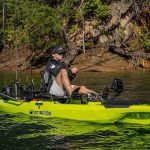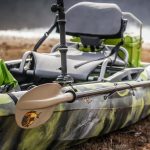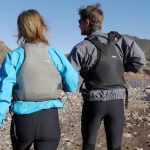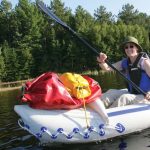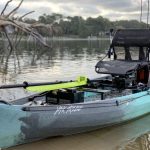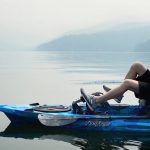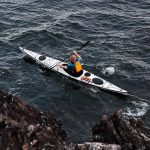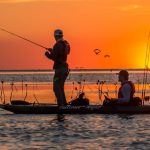Founded in 2016, Bonafide Kayaks is a relative newcomer to the kayak fishing market. 100% made in the USA, their kayaks are known for uncompromised quality and great stability. Let's see what Bonafide Kayaks has to offer in 2023.
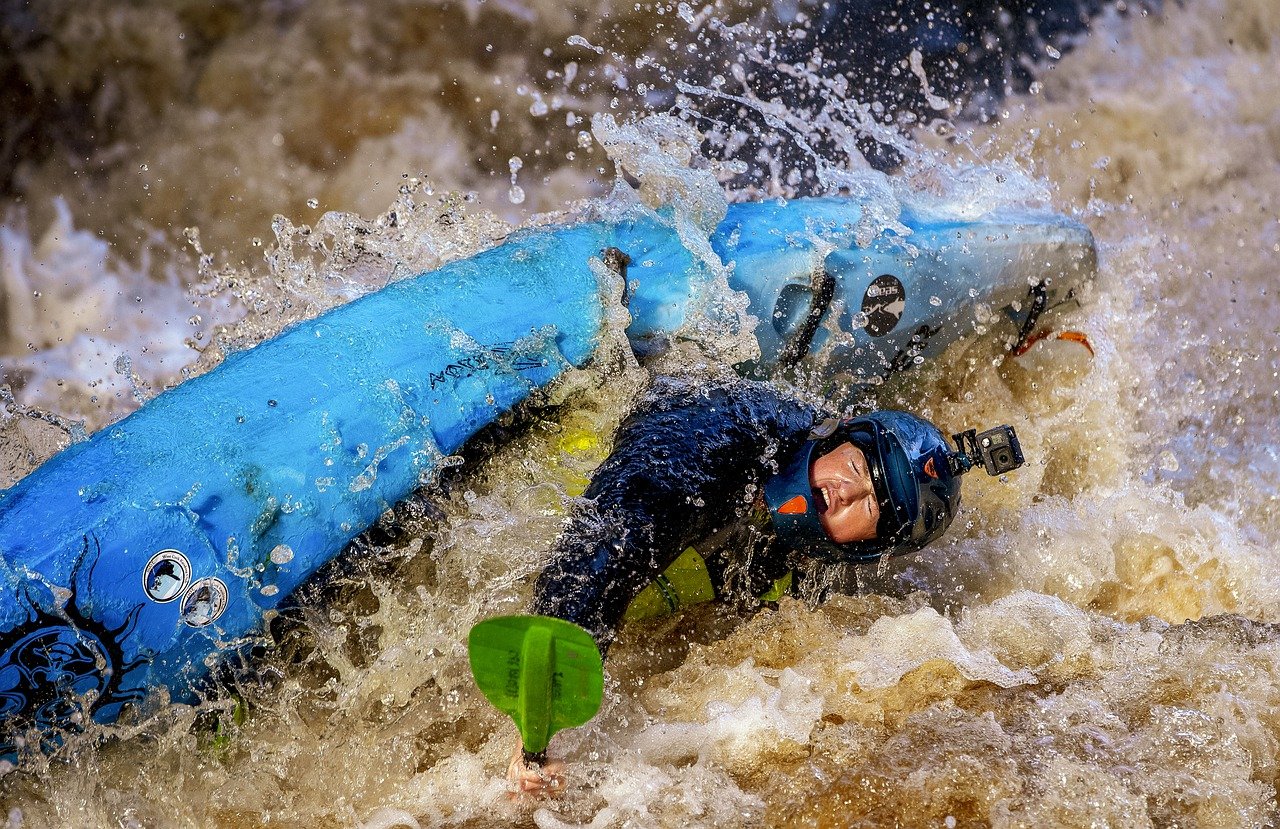
When you go kayaking, even on the calmest days on the water, you should always be prepared to get wet. One of the most important pieces of equipment that you should always wear is your PFD.
Which life jacket is best for kayaking? It depends on various factors, including your body shape, type of kayaking, and budget. We’ve put together our list of our top ten kayaking PFDs and our top tips for buying the right vest for you.
As an affiliate of Amazon and other retailers, we may earn a small commission when you buy via our links, at no additional cost to you. Thank you!
10 Best Kayaking PFDs At a Glance
- Best Recreational – Astral V-Eight
- Best Female Specific – Astral Layla
- Best for Kayak Fishing – Stohlquist Keeper
- Best Touring – NRS Odyssey
- Best for White Water – NRS Ninja
- Best Rescue – Astral Green Jacket
- Best Youth – Stohlquist Drifter Youth
- Best Budget – NRS Vista
- Best Inflatable – NRS Matik
- Best Belt – Astral Airbelt
Comparison Table: Best Kayaking PFDs
| Model | Specs | Where to buy |
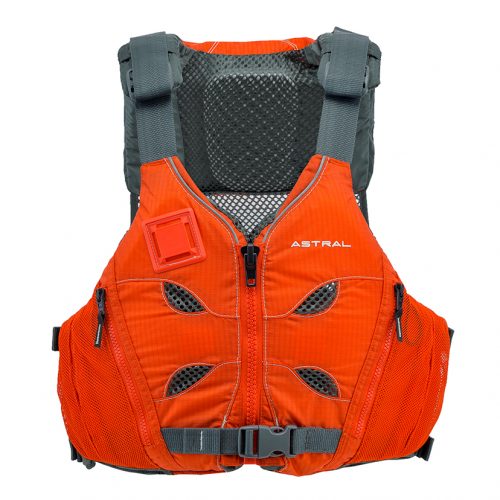 Astral V-Eight | Weight: 1.22 lbs Floatation: 16 lbs USCG Rating: Type III Entry system: Front zip | Amazon |
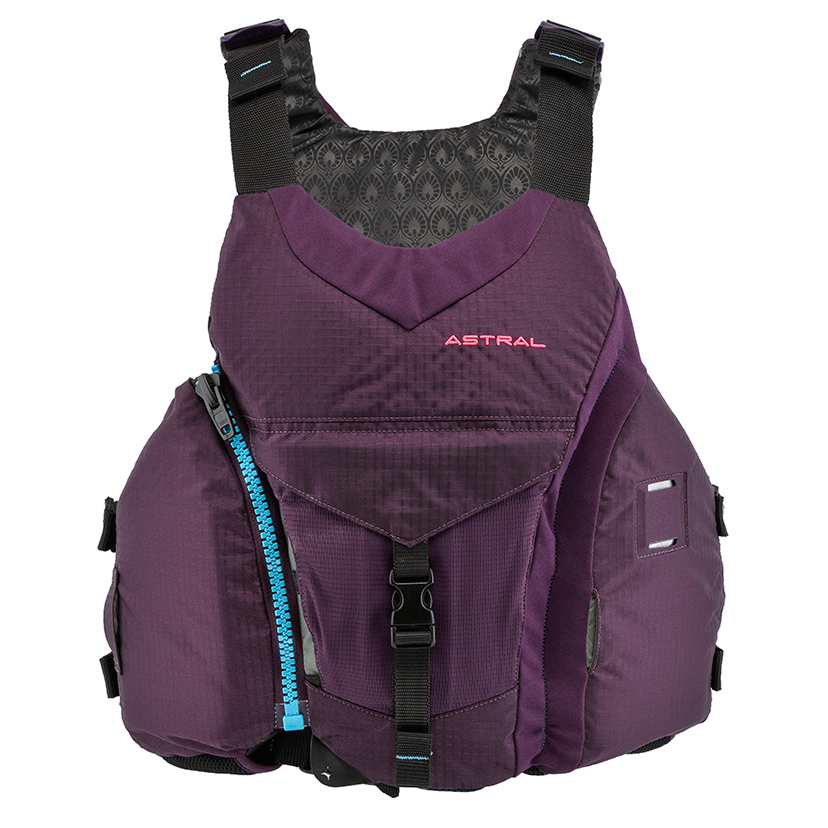 Astral Layla | Weight: 1.76 lbs Floatation: 16.3 lbs USCG Rating: Type III Entry system: Side zip | Amazon |
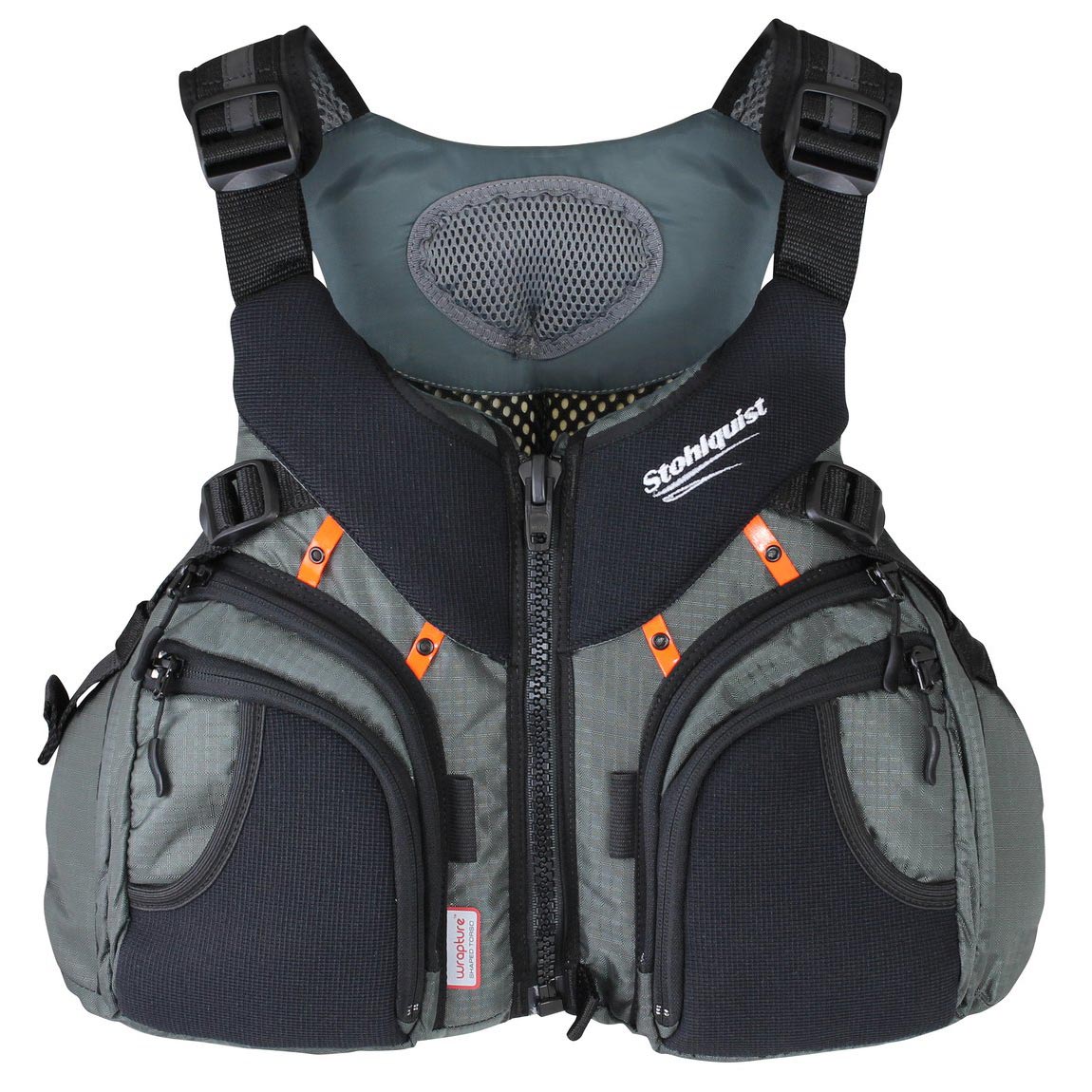 Stohlquist Keeper | Floatation: 16 lbs. 8 oz USCG Rating: Type III Entry system: Front zip | Amazon |
 NRS Odyssey | Weight: 1.9 lbs Floatation: 16.5 lbs USCG Classification: Type III Entry system: Front zip | Amazon |
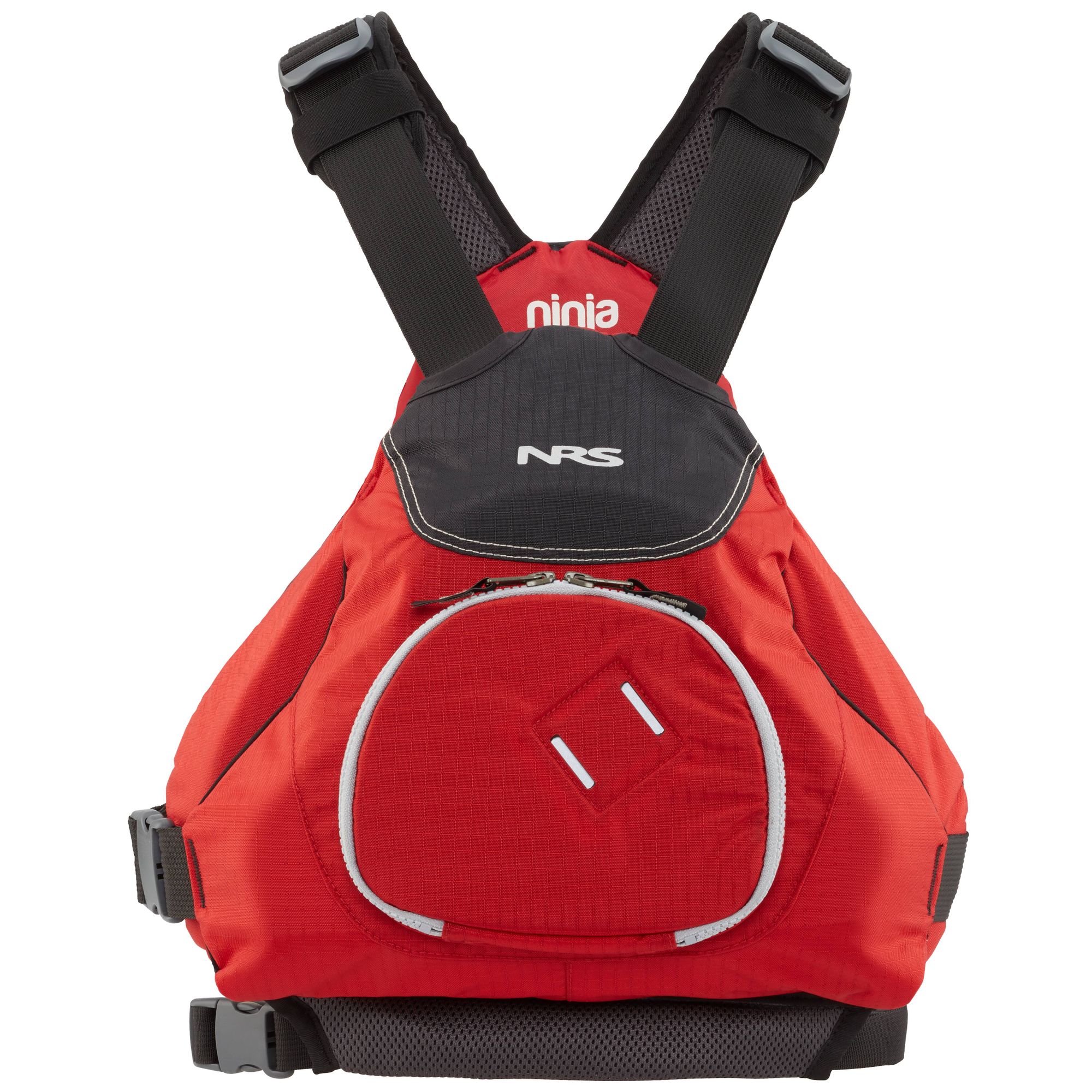 NRS Ninja | Weight: 2.15 lbs Floatation: 16.3 lbs USCG Rating: Type III Entry system: Side Buckle | Amazon |
 Astral Green Jacket | Weight: 2.9 lbs Floatation: 16 lbs USCG Rating: Type V Entry system: Pullover | Amazon |
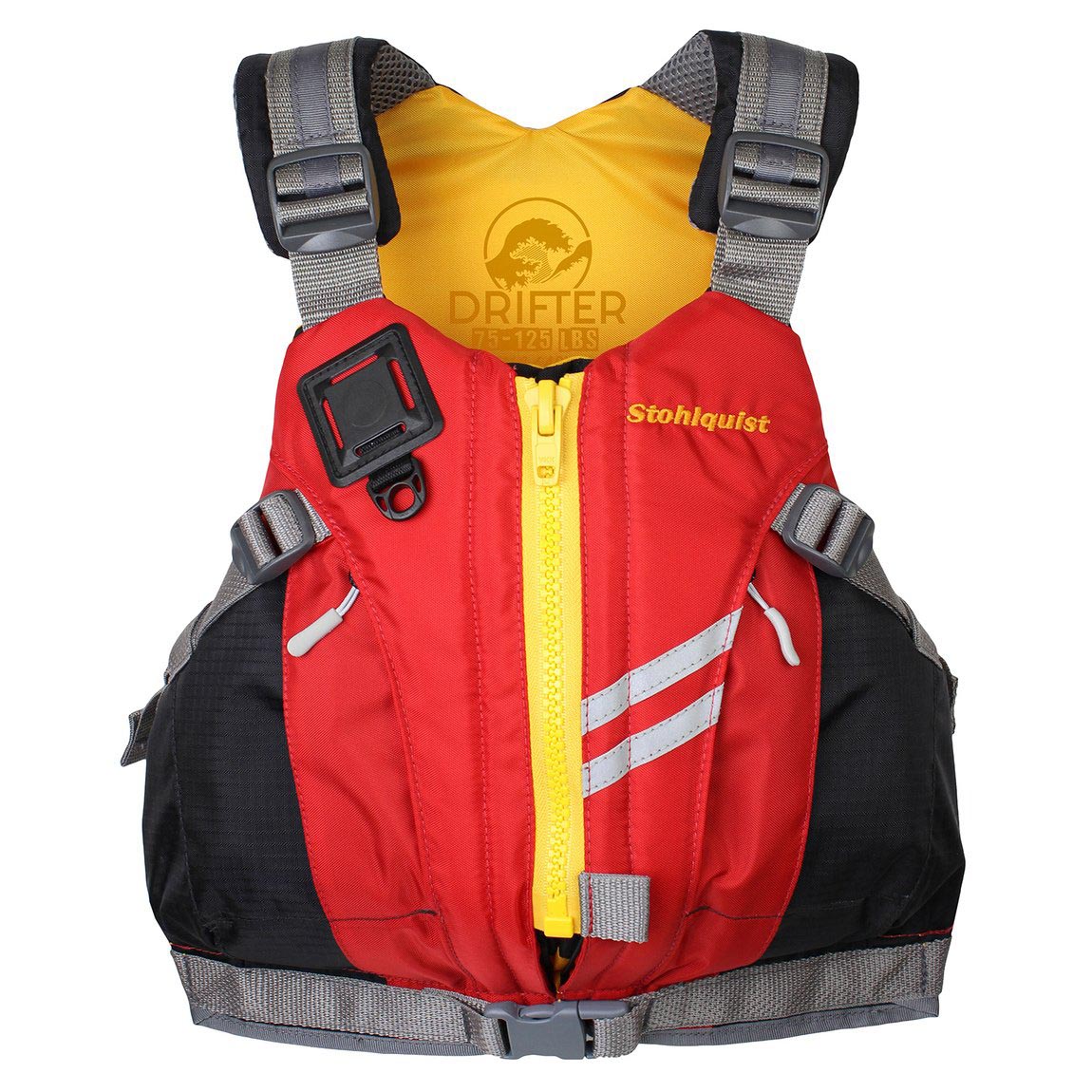 Stohlquist Drifter Youth | Weight: 1.6 lbs Floatation: 11 lbs USCG Rating: Type III Entry system: Front zip | Amazon |
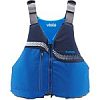 NRS Vista | Weight: 1.2 lbs Floatation: XS/M: 16.9 lbs., L/XL & XL/XXL: 17.2 lbs USCG Rating: Type III Entry system: Front zip | Amazon |
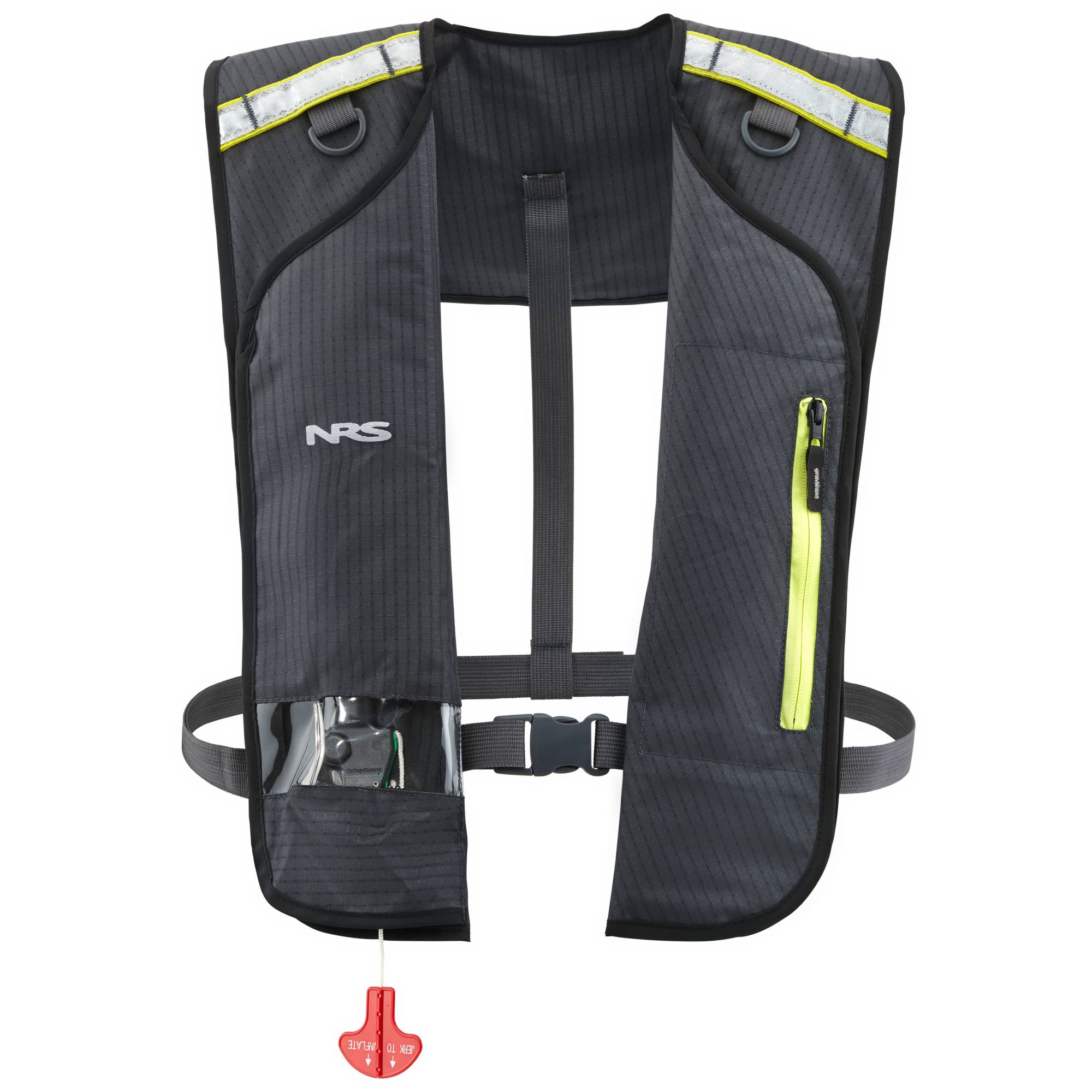 NRS Matik | Weight: 1.8 lbs Floatation: 22.5 lbs USCG Classification: Type V Entry system: Over the head with waist buckle. | Amazon |
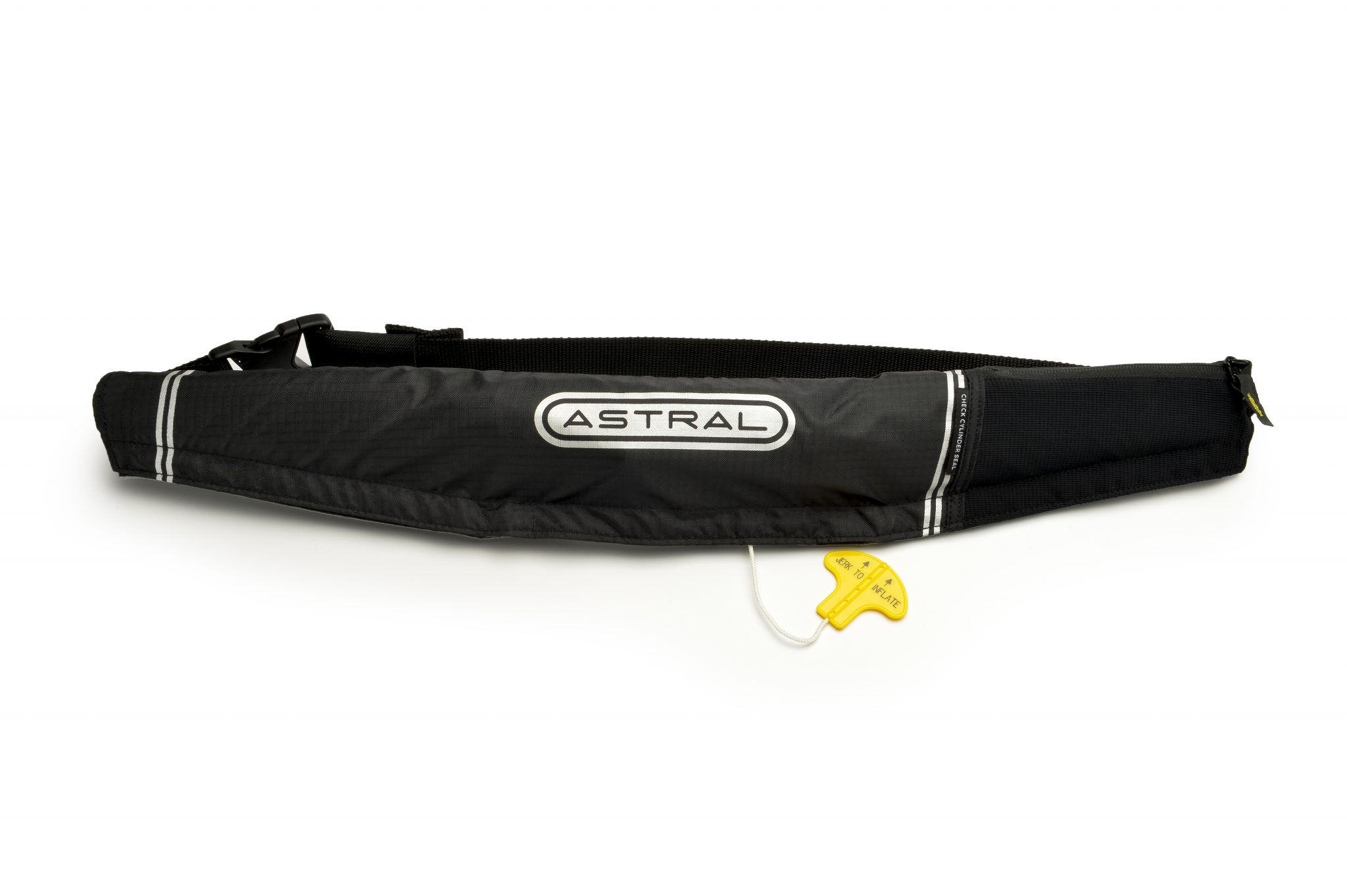 Astral Airbelt | Weight: 0.78 lbs (without cartridge) Floatation: 22 lbs. USCG Rating: Type V Entry system: Waist mounted | Amazon |
Best PFDs for Kayakers: Our Top Ten List

Best Recreational PFD – Astral V-Eight
Weight: 1.22 lbs
Floatation: 16 lbs
USCG Rating: Type III
Entry system: Front zip
The Astral V-Eight is one of the most versatile recreational PFDs on the market. This is equally at home on your local lake, gentle rivers, short tours, and even beginner fishing trips. The cut of the V-Eight is designed to fit men and women comfortably and Astral has kept the foam low profile to maximize your movement.
The mesh back panel of the V-Eight means you truly benefit from the comfort of a high-backed seat as well as keeping your back fully ventilated. The front panel is fitted with several ventilation ports to prevent you from overheating out on the water. Astral is aware that many recreational kayakers are likely to be wearing thin layers at most underneath this PFD and have ensured that their straps are comfortable against the skin, or on top of the foam.
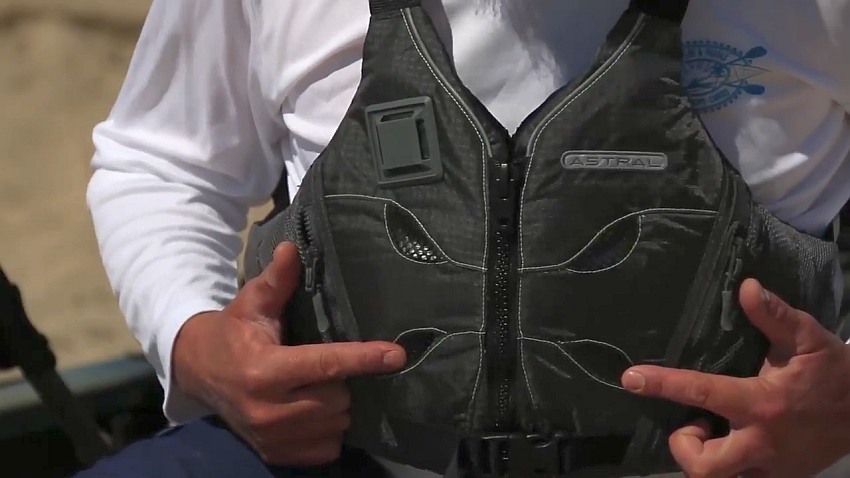
Strap management is important and the shoulder straps on the V-Eight velcro out of the way when tightened, to prevent them from being whipped around in the wind and potentially hitting you. The V-Eight comes with two large pockets to stow on-the-water equipment, as well as a knife tab.
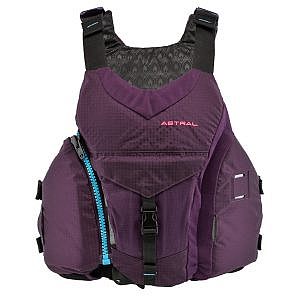
Best Female Specific – Astral Layla
Weight: 1.76 lbs
Floatation: 16.3 lbs
USCG Rating: Type III
Entry system: Side zip
The Astral Layla is based on a design that originated in the ‘90s and has been revamped and improved over the years. Nowadays, the Layla is among the best female-specific PFDs on the market and the most versatile PFDs of all. Whether you’re going out for a recreational day out, a short tour, a trip on a paddleboard, or getting into whitewater kayaking, the Layla has you covered.
The foam panels on the front and rear use malleable foam with a hinged ‘princess cut’ and these couple with Astral’s self-styled ‘boob cups’ to ensure the Layla fits close to the body and stays securely in place. Side zip entry means that the Layla fits over just about any kayaking clothing easily, but keeps the zip mechanism out of the way to allow more room for a large front pocket. That pocket is big enough for anything you might need to take out on the water with you. There is also a knife tab to keep your rescue knife close at hand.
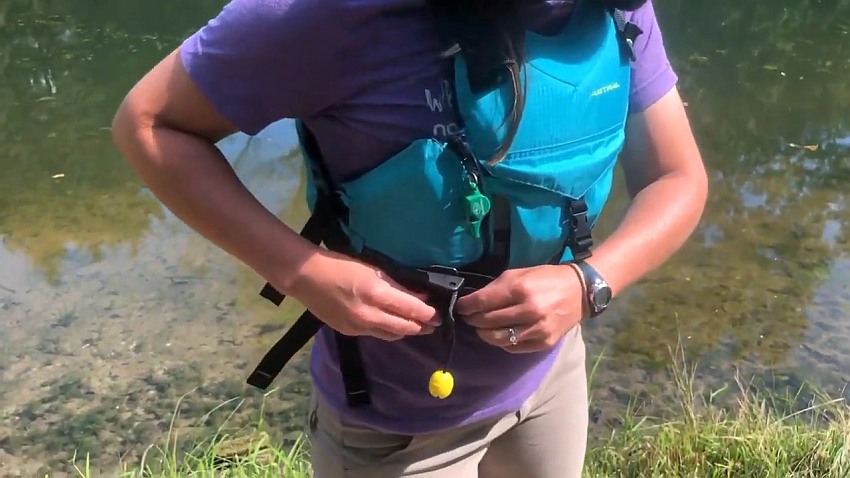
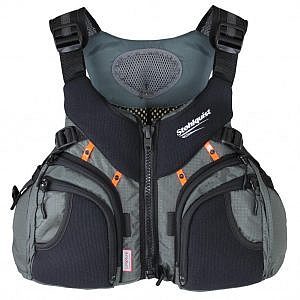
Best for Kayak Fishing – Stohlquist Keeper
Floatation: 16 lbs 8 oz
USCG Rating: Type III
Entry system: Front zip
This all-around fishing vest from Stohlquist narrowly beats off competition from the NRS Chinook to take our top spot for fishing PFDs. The Keeper utilizes a mesh back to let you fully appreciate the comfort of the highly adjustable high-backed seats that most fishing kayaks now come with. This high back lets your back breathe on hot days out on the water and stops you from overheating, or being tempted to remove your PFD.
RELATED: Stohlquist PFDs 2023: the Ultimate Guide and Reviews
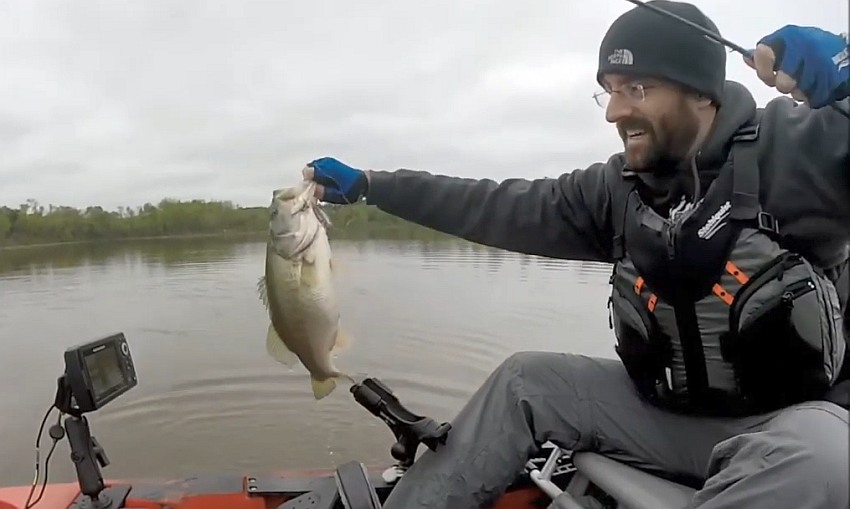
The best angling PFDs feel like you’re wearing your favorite fishing vests, and the Keeper is no exception. With a selection of large zippered pockets, complete with internal organization, and expandable mesh on the front of the Keeper, you can keep tackle and tools close at hand. With multiple leash attachment points, you can attach your tools to you, so you won’t have to watch your snippers sink out of sight if you let them go.
Behind these pockets, Stohlquist has included two hand-warmer pouches. This PFD is designed for year-round use, and when frost is nipping at your fingers in early spring, these pockets can bring life back to your hands and keep you casting for longer.
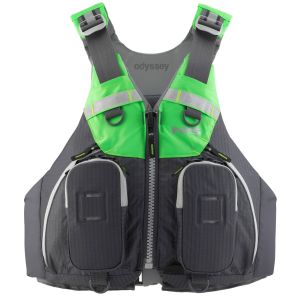
Best Touring – NRS Odyssey
Weight: 1.9 lbs
Floatation: 16.5 lbs
USCG Classification: Type III
Entry system: Front zip
High-backed PFDs are excellent for certain types of kayaking, but all that foam has to go somewhere, and usually, it’s the front. The NRS Odyssey is a full-body sea kayaking PFD, but the foam has been kept low-profile throughout to allow you a full range of motion. The Odyssey is comfortable to use with high-back seats but is best used in more traditional style touring kayaks, where the seating system sits under the level of the cockpit. For touring with a high-backed seat, the NRS cVest is our top choice.
The front zip entry system on the Odyssey makes it easy to fit this PFD over any kayaking kit, no matter what the weather is doing. The fully adjustable straps are easy to access or alter, and the shoulder straps have ‘strap garages’ to stow them away once tightened. This means that in strong winds out on the sea, you won’t have straps whipped up and hitting you in the face as you try to kayak.
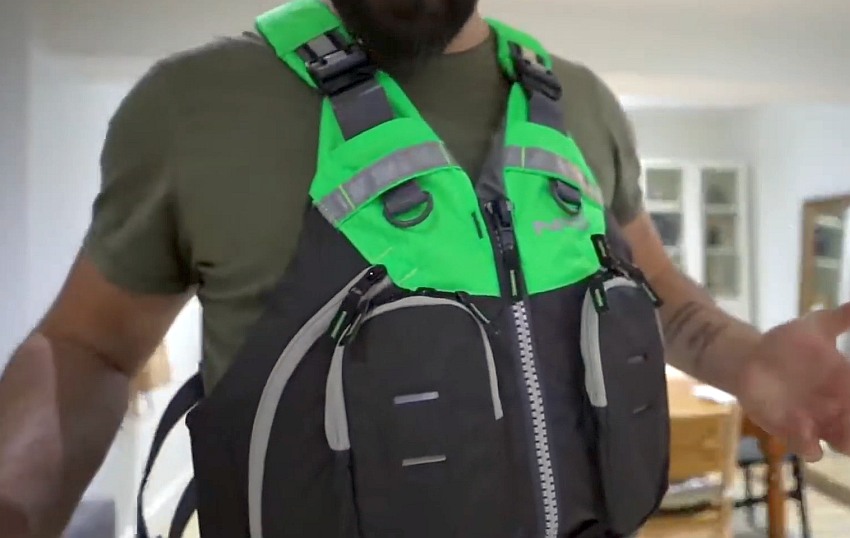
The two large side pockets fit snacks, phones, cameras, and safety equipment, while the front pockets are suited to the same, but also fit a VHF radio, or navigation equipment. Multiple knife leash points and gear tabs let you attach important items, like whistles, compasses, or glow sticks for night kayaking, and keep them safe. Reflective strips around the Odyssey make you more visible to other water users and help to keep you safe, especially in low light.
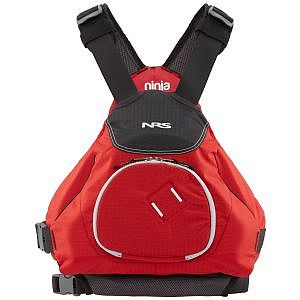
Best for White Water – NRS Ninja
Weight: 2.15 lbs
Floatation: 16.3 lbs
USCG Rating: Type III
Entry system: Side Buckle
The NRS Ninja is one of the best low-profile PFDs on the market and our top pick for the best all-around white-water vest. It fits most body shapes but is also agreed to be one of the best all-round PFDs for smaller kayakers, the low cut, and profile fitting shorter torsos more comfortably than most PFDs. It’s this same low-cut and huge freedom of movement that makes it so good for white water, where you need to make quick movements in a tight environment.
The side entry on the Ninja means you can comfortably put this on over drysuits and layers, but this is equally comfortable over a t-shirt, or swimsuit in the summer. With six adjustment points, you can make the Ninja fit your body perfectly so that when you’re swimming in high-pressure situations, you know you have a PFD that will stay put and keep you safe.
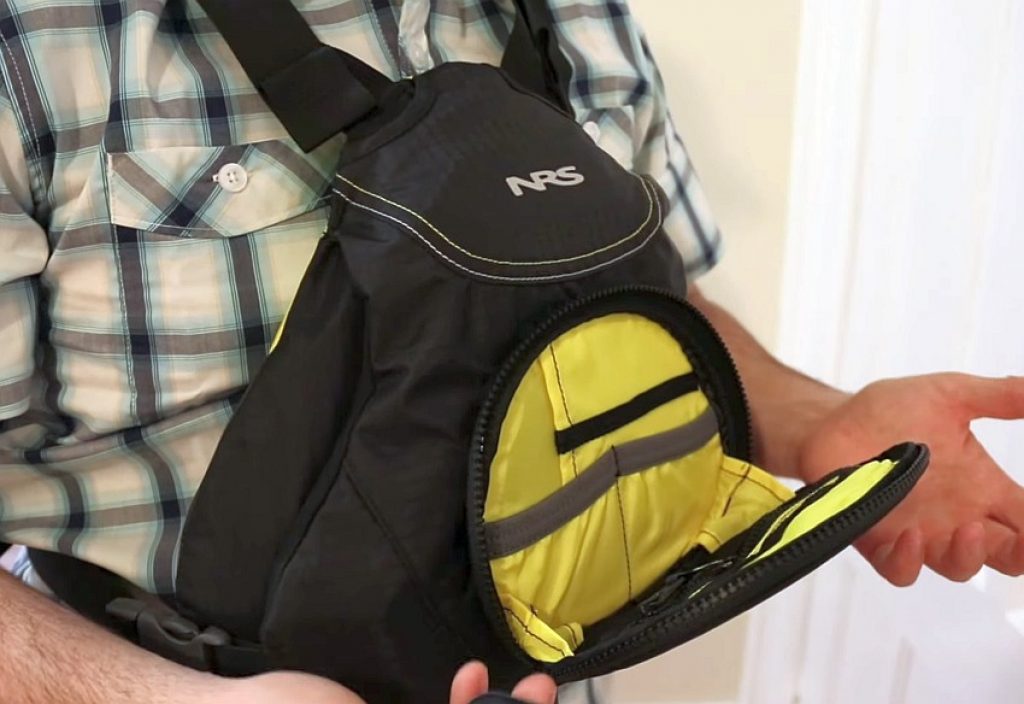
On the front of the Ninja, NRS has fitted an enormous clamshell-style pocket that easily fits all of your rescue gear, your phone, camera, chocolate, and everything else too. There is a knife tab to attach your rescue knife and keep it easily within reach, on the front of the pocket.
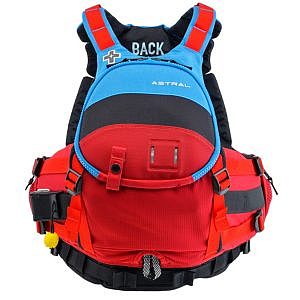
Best Rescue PFD – Astral Green Jacket
Weight: 2.9 lbs
Floatation: 16 lbs
USCG Rating: Type V
Entry system: Pullover
The Astral Green Jacket has been at the top of this list for years, but nothing looks like toppling it from the top spot any time soon. With good reason, too. The moment you put this thing on, you get the feeling that you’re going to be kept safe, no matter what the situation throws at you.
The Green Jacket takes its name from one of the steepest, gnarliest creeking rivers in the US, the Green, and has seen action around the world in tight gorges, huge waterfalls, and monstrous rivers. The foam is cut in a way that gives you a full range of motion, but also protects you from rocks if you end up in the water. The sides are reinforced, too, to protect your vitals in a rescue situation.
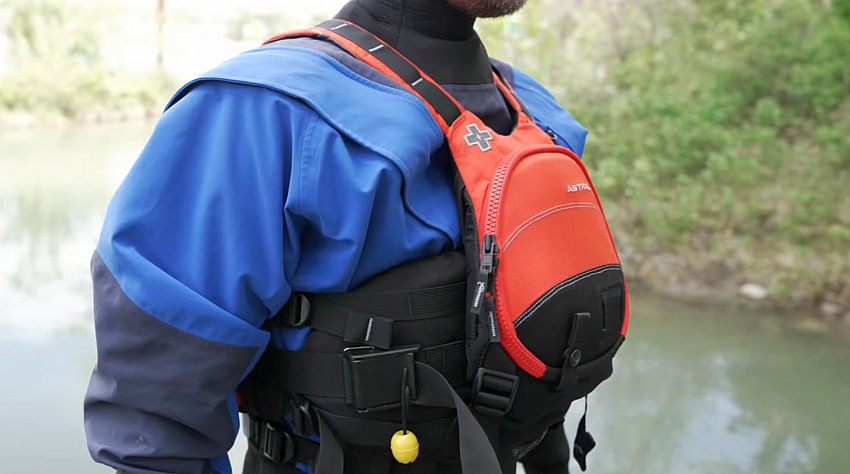
The rescue harness fitted to the Green Jacket lets you perform live-bait rescues, and there are additional attachment points that let you turn this into a full-body harness. The enormous clamshell pocket on the front is organized to keep your rescue gear close at hand and extra side pockets are fitted for carabiners. All of this protection and rescue-readiness doesn’t come without some extra weight, though, and unless you need it, you’ll probably want to go for something more lightweight as you learn to paddle white water.
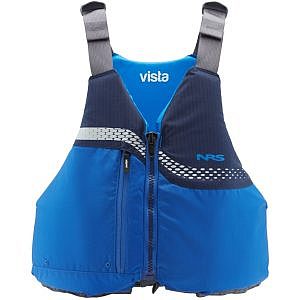
Best Budget Life Vest – NRS Vista
Weight: 1.2 lbs
Floatation: XS/M: 16.9 lbs. | L/XL & XL/XXL: 17.2 lbs
US Coast Guard Classification: Type III
Entry system: Front zip
NRS Vista has the fit and comfort of a high-end recreational PFD, but a price tag that makes it suitable for beginners, infrequent kayakers, or as spare PFDs for visiting friends or family. The sizes are fairly all-encompassing, with the Vista having one of the broadest fits of any PFD on the market. They come in XS – M, L – XL, and XL – XXL, as well as a youth model that fits a wide range of young kayakers.
The Vista is simplistic and this keeps it so lightweight that you will barely even notice that it’s on you. Malleable foam contours to your body and six adjustment points mean you can get a close fit that is comfortable, freeing, but safe for swimming. The lightweight outer fabric is comfortable against your skin, but perhaps not as hardwearing as other PFDs on the market.
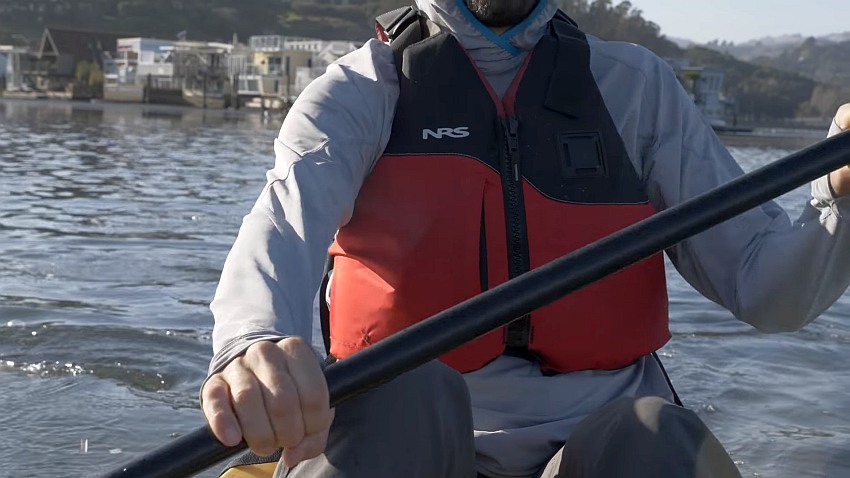
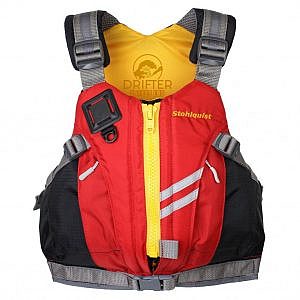
Best Youth PFD – Stohlquist Drifter Youth
Floatation: 11 lbs
USCG Rating: Type III
Entry system: Front zip
The Stohlquist Drifter Youth is the youth version of one of Stohlquist’s most popular recreational PFDs, the Drifter. The Drifter Youth suits recreational kayaking, touring, and some entry-level whitewater kayaking, too. This is a great all-around PFD for children exploring the different opportunities that kayaking can offer and finding their way in paddling.
One of the major issues with any youth equipment is finding ways to make it fit a wide range of youngsters at different stages of their physical development. The Drifter Youth is designed with extra-wide armholes, multiple adjustment points, and chest cinch-down straps to prevent the PFD from riding up on the torso. This means that as your child grows, the PFD can continue to fit them comfortably while giving them the range of movement they need to enjoy their time on the water.
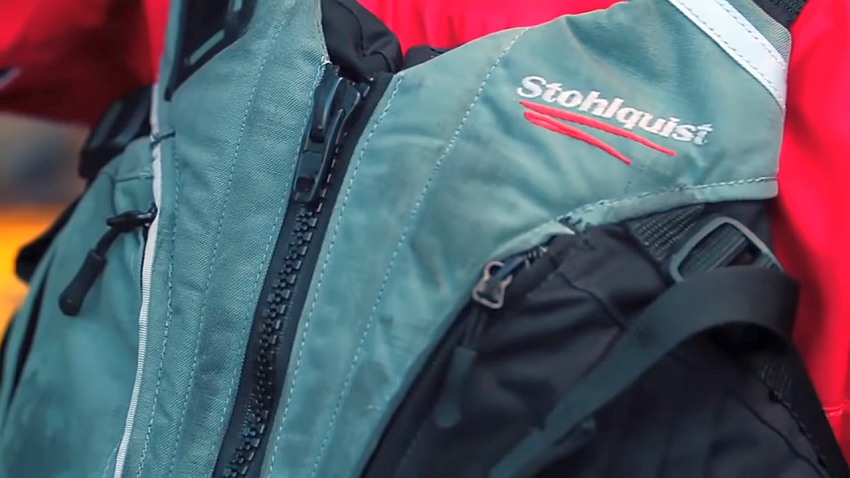
Two front pockets and a leash tab let your child take ownership of their gear on the water. As they develop, they may need to take safety gear, or whistles on the water with them, and the leash tab gives them a place to attach this safely. The front zipper is fitted with an extra chunky zip, so that small hands find it easier to put their PFD on and off.
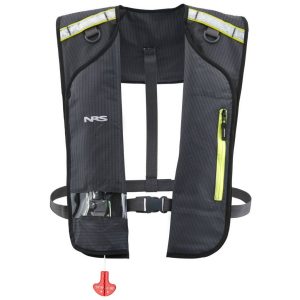
Best Inflatable Life Jacket – NRS Matik
Weight: 1.8 lbs
Floatation: 22.5 lbs
USCG Classification: Type V. Meets requirements for Type III when worn.
Entry system: Over the head with waist buckle.
Some kayak anglers prefer to feel as though they are unencumbered by a foam panelled PFD on long days out on the water. The NRS Matik is a manually operated inflatable PFD that offers a massive amount of flotation when you need it the most. The 22.5 lbs. of flotation is particularly welcome to offshore anglers.
This low-profile fit is comfortable and unrestrictive while allowing your body to breathe and stay cool as you cast. It fits around your neck and attaches at the waist, ready to be inflated with a pull on the red toggle. Most kayakers prefer this manual inflation, but if you’re going offshore and want an automatic inflatable PFD, check out the NRS Otto Matik.
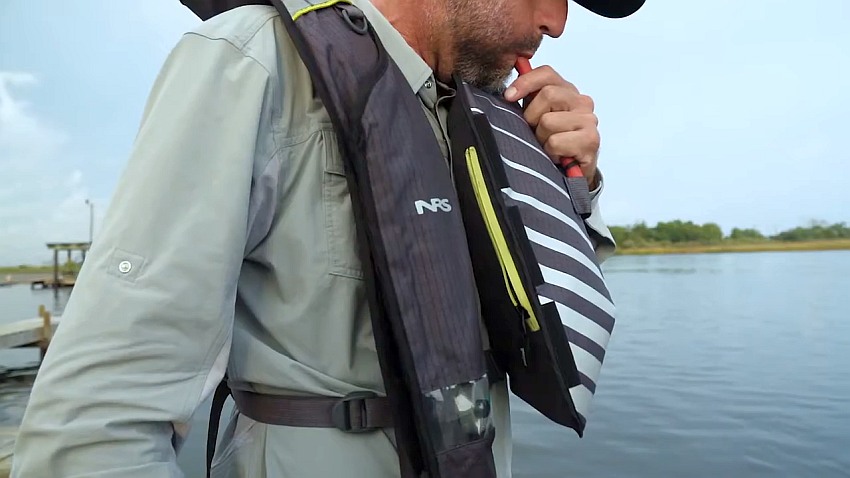
The CO2 cylinder inside this vest will need to be replaced and the PFD rearmed between uses. Keep a spare with you out on the water to make sure you don’t run the risk of being left without flotation after one dip in the water.
Best Belt-Style Flotation Aid – Astral Airbelt
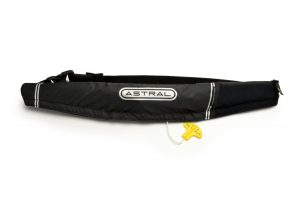
Weight: 0.78 lbs (without cartridge)
Floatation: 22 lbs
USCG Rating: Type V
Entry system: Waist mounted
PFD belts are popular among the paddleboard fraternity, who have historically relied on their board for flotation support, but appreciate that there are times when having secondary buoyancy can be lifesaving. If your board deflates, or you come free from it, you need to know that you will stay safely afloat while you await rescue or self-rescue. The Astral Airbelt is low profile and stays well out of the way until you need it when it deploys with a full 22 lbs. of flotation.
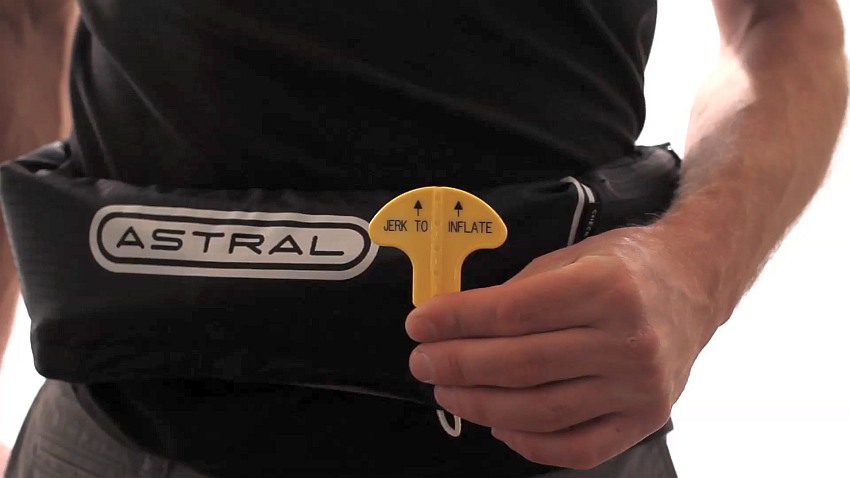
This is not an automatic PFD but relies on you pulling the toggle to inflate it. This means that if you fall in but don’t need the belt to deploy, you won’t have it going off on you accidentally. Once inflated, fit the strap over your head with the adjustable shoulder straps, and float. This PFD will float you on your back. The cylinders on these are only good for one use, so if you plan to stay out on the water after a deployment, make sure you have spares and know how to rearm your PFD on the go.
How to Choose a PFD for Kayaking? Our Top Tips
Here are our top tips for you to choose between PFDs and make sure you buy the perfect kayaking life vest.
PFD Type
Whether you need a specific style of PFD will depend on your preferred style of kayaking. Recreational PFDs are usually all-encompassing and have many of the features we will look at shortly. While they’re suited to lower grade white water, shorter tours, or beginner fishing trips, they are limited by their features, ventilation, and often comfort.
The best PFD for kayaking is the one that you will wear every time you go on the water. Therefore, comfort and fit are the most important factors. How well a PFD fits you depends on the type of PFD, size, and design. We recommend trying on a range of PFDs before you buy one.
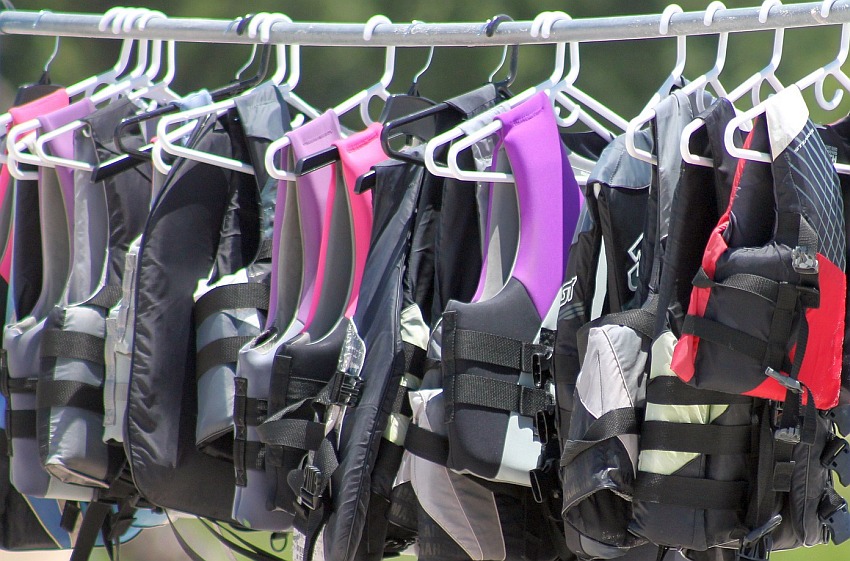
USCG Rating
The US Coast Guard categorizes personal flotation devices into five different categories.
- Type I – These have the most inherent buoyancy and are designed for rough conditions or offshore use. Type I PFDs are designed to turn unconscious casualties into a safe position.
- Type II – These are designed for calmer waters or nearer shore and can turn some casualties onto their back.
- Type III – These are not designed to turn casualties over but only to provide flotation.
- Type IV – These are thrown devices to aid a struggling person to either assist rescue or keep them afloat while they await rescue.
- Type V – These are sport-specific or condition-specific PFD. Each of these devices has its specific use.
Most kayaking PFDs are type III, with some rescue jackets categorized as type V. Although these don’t have the same level of flotation as type I and II PFDs, they give you much more freedom of movement and are far more comfortable for long days on the water. Type III PFDs rely on the kayaker being active in the water but are far easier to swim in than other PFD types.
Flotation
Most adults will float comfortably in the water with just 12 lbs. flotation. This might seem surprisingly low, but it’s worth remembering that you weigh considerably less in water than you do on land. Our bodies tend to float well enough anyway, with the extra buoyancy helping to keep us afloat comfortably and keep our heads above water.
Though 12 lbs. is often enough, most PFDs come with around 15 – 16 lbs. Top-end whitewater PFDs are loaded up with around 16.5 lbs. It’s better to have more flotation than less, especially in rough water like rivers or the sea.
Children up to 100 lbs. will require around 11 lbs. of flotation, while infant PFDs should offer 7 lbs. flotation.
Entry Style
Getting your PFD on and off comes with its own challenges. Presuming that you have the sizing right, it should never be too hard to get your vest on. If you are wearing more layers, or a drysuit with a zip across the back, over-the-head style PFDs can be difficult to get on. Zipped or side-entry PFDs are usually easier to get over layers of clothing but may inhibit features like pockets or extra attachment points.
The entry style of a life jacket is a personal preference. Many kayakers love the simplicity of a PFD that goes on over your head. For a start, there are fewer moving parts that can potentially break, seize, or fail, no matter how unlikely this is. Secondly, they are usually lighter and can sit more comfortably without zips and excess buckles.
Comfort/Fit
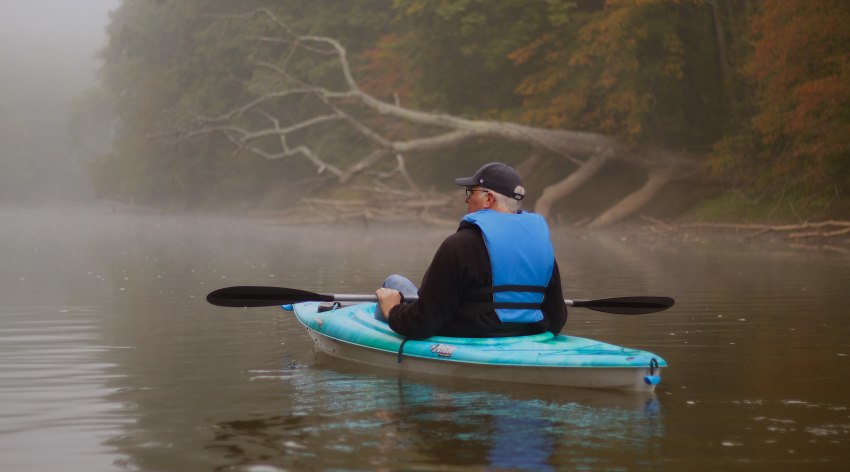
Remember, you’re going to be wearing your PFD all the time while you are kayaking. It’s worth spending some time checking that the fit is right for you before you commit to this. Some of the features we will look at shortly will make a difference to your day, but for now, here are some of the important factors to consider when it comes to fit.
PFDs rely on foam for flotation. Often, this foam comes as long panels that cover your torso. If these panels are too long, you will struggle to sit comfortably without them either pushing you into an awkward position or rubbing on your chin.
Equally, if these panels are too wide, you won’t be able to move your arms properly and paddle without chafing or irritation.
Modern malleable foam and the cut of PFDs have gone a long way to limit these issues, but a poorly fitted PFD is still going to be uncomfortable.
Some styles of life vests, such as whitewater PFDs, don’t cover the entire torso. Instead, they centralize the foam on a certain part of the body, usually around the midriff. This keeps the foam out of the way and maximizes movement, as well as floating you slightly higher in the water. It’s important to check that this foam fits as the manufacturer intended when trying on your PFD.
Shoulder straps, adjustment buckles, zips, and the internal material of a PFD all add or detract from the fit and comfort of a PFD. When you test your life jacket, make sure that you are wearing what you would wear to kayak in. Otherwise, you’re going to get a false impression of how comfortable a PFD is. Make sure you can reach pockets or leashes and that all the necessary features are accessible.
Features of a Great Kayaking PFD
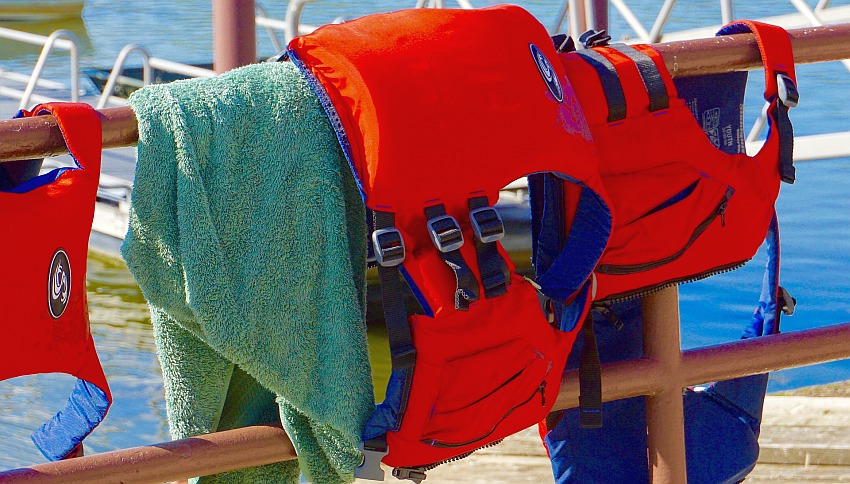
There are myriad features that PFDs can be designed to incorporate. Usually, these have a direct impact on the price of the life vest. The most feature-laden PFDs are also the most expensive. It’s up to you to decide whether you need these features and how you value them in terms of use, rather than dollars.
Pocket(s)
Depending on your style of kayaking, you may need a secure space close at hand to store important equipment, like rescue gear, VHF radios, tools, and tackle.
Alternatively, you might just need space for a snack or your phone (in a waterproof pouch of course), or perhaps a fold-out beverage holder that fits a can perfectly.
Some touring life vests even have a pocket on the back panel that can be used to fit a water bladder, so you can stay hydrated hands-free.
However you choose to store your gear, pockets on PFDs are one of the most highly sought-after features. Whether you prefer a large pocket that doubles as a shelf, or multiple smaller pockets, is up to you. Make sure your pockets are large enough for your intended purpose, are easy to access, and secure enough that you aren’t going to lose any gear.
Mesh Back
A lot of current recreational, touring, and fishing kayaks now come with high-backed seats, which offer superior support and all-day comfort. Much of that comfort and a lot of the ventilation were lost when you had to wear a traditional style PFD. Some kayakers found themselves forced into uncomfortable positions.
High back, mesh style PFDs let you fully enjoy the comfort of a high-backed seat. The buoyancy is moved to the front of the PFD so you don’t lose any flotation.
Rescue Belt
In extreme whitewater situations, you need to be ready to rescue your fellow paddlers at a moment’s notice. A rescue belt lets you perform a live bait rescue, where you attach a rope to yourself and leap into the water to aid a kayaker, while another team member on the bank holds the rope, ready to haul you back out of the river.
Rescue vests fall into USCG type V and require appropriate training to use properly, but if you need a rescue belt, they’re invaluable.
Wearing your PFD
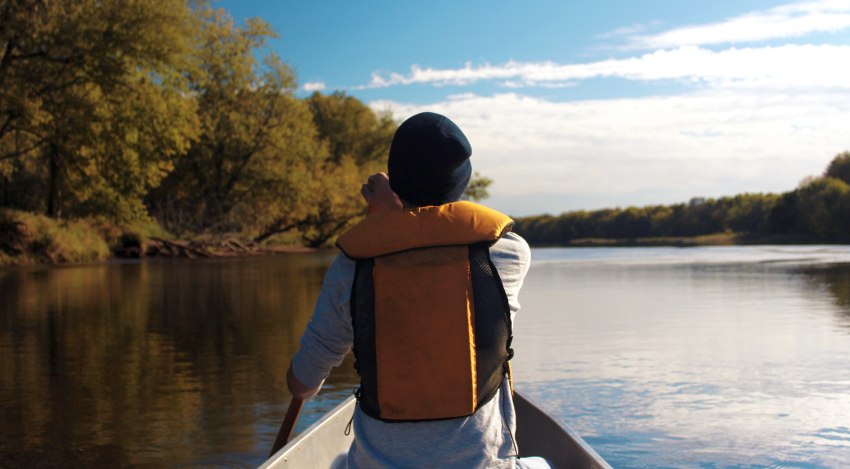
Once you choose your perfect PFD, there are a few questions to answer about their use:
There’s a reason that PFDs come in all shapes and sizes. That reason is simple; everyone should wear a PFD on the water, at all times. Even the most experienced kayakers won’t take to the water without a PFD, because they know that danger can befall you without warning. PFDs are available for youths, adults of all shapes and sizes, and even pets. Make sure your PFD fits you properly and is tightened so you can swim easily.
When you arrive at your local lake on a hot summer’s day, it might be tempting to skip the PFD.
Don’t.
Falling out of a kayak is different from deliberately taking yourself in for a dip. The water you kayak in is usually deeper, you may be further from shore, and when you fall in, it’s likely to come as a shock to you. Also, it’s unlikely that you’re going to go swimming fully clothed.
You should always wear a PFD when you’re on the water because you never know when you might fall in. The shock of falling in can catch you out and your PFD will bring you back to the surface and let you breathe. You can also rest in the water and organize your gear, or sort your kayak out, before climbing back on board.
The specific fit of your PFD will vary between styles, but some general principles can help you fit your PFD properly.
When you put your PFD on, whether it goes over your head, or zips up the front, you should start with the straps loose. Tighten the straps, starting at the bottom-most straps and working your way up, while making sure the PFD stays in the right place – this is usually around your midriff. Tighten the shoulder straps last. Use these to pull the top of the PFD in to contour to your shoulders, but try not to pull the PFD too close to your chin, otherwise, you’ll find it rubs when you sit to paddle.
Your PFD should fit snug to your body, but shouldn’t restrict movement or breathing. Hook your thumbs under your shoulder straps and pull upwards to test your fit. Your PFD shouldn’t pull up over your head and you generally shouldn’t be able to get your thumbs higher than your ears. A PFD that rides up will be difficult to swim in and may come off in the water.

